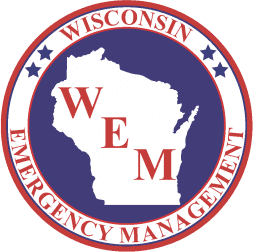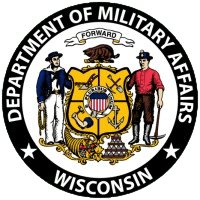WEDC, WHEDA launching new programs to provide small businesses and homeowners with forgivable or no-interest loans for flood-related cleanup, repairs
COON VALLEY – Wisconsin homeowners and businesses impacted by the recent flooding will be eligible for financial assistance for repair, cleanup and other costs under two new programs that will provide up to $4 million in funding, Governor Scott Walker announced today.
The Wisconsin Housing and Economic Development Authority (WHEDA) is launching a new $2 million Flood Relief Loan program that will provide no-interest loans of up to $10,000 for repairing homes damaged by flooding.
The Wisconsin Economic Development Corporation (WEDC), in conjunction with its regional partners, is unveiling a $2 million Disaster Recovery Microloan Program aimed at small businesses that will provide an immediate source of funds for necessary restoration work and related expenses.
“While the floodwaters have receded, we know hundreds of businesses and homeowners are still dealing with the costs associated with the flooding that hit much of the state,” said Governor Walker, who announced the programs Friday in Vernon County. “We are implementing these new programs to give residents and business owners an immediate source of funds to make needed repairs without having to cut through a lot of red tape.”
The two programs are being announced as businesses and homes in 21 counties were damaged last month after heavy rains caused widespread flooding. More than 4,300 homes and 140 businesses have sustained more than $150 million in damage, according to preliminary estimates from Wisconsin Emergency Management.
WHEDA Flood Relief Loans
The new loan program will help fill any financial gap, after all insurance proceeds and available federal aid have been used, to repair damaged homes. The maximum loan amount per home is $10,000 and funds must be used to repair flood damage. The majority of loan funds must be used to repair or replace heating, electrical or plumbing systems, foundations and/or structural elements.
“WHEDA recognizes that many homeowners have been devastated by damaging flood,” said WHEDA Executive Director Wyman Winston, who joined Governor Walker in Friday’s announcement. “This new product will help fill any financial gap, after insurance proceeds and other available federal aid have been used, to repair the home.”
The no-interest loans will be secured by a subordinate mortgage on the home. Although periodic payments are not required, repayment would be due upon the sale of the home during the first 10 years. The loan will be forgiven if not repaid within 10 years.
Loan eligibility requirements include:
•For residential structures of four units or less, where at least one of the units is owner-occupied and serves as the principal residence of the owner;
•The borrower must be the owner and have a family income that does not exceed 120 percent of county median income;
•The borrower will be required to utilize all available insurance proceeds as well as pursue and accept all available federal aid prior to utilizing WHEDA loan proceeds; and
•The borrower will be required to document the use of WHEDA loan proceeds for eligible uses
Homeowners interested in applying for a WHEDA Flood Relief Loan can call 1-800-562-5546.
WEDC Disaster Recovery Microloan Program
Under the program, WEDC will award grants to regional entities that will provide the microloans of up to $15,000 to assist businesses with a short-term source of funds for repair work and operating expenses until more long-term recovery funding can be secured. The no-interest loans have a two-year repayment period, with payments deferred for at least six months. Forgivable loans of up $15,000 may also be offered to small businesses.
“A natural disaster like the recent floods can have a devastating economic effect on small business owners as they struggle with having to repair damage to their business and other related expenses,” said Mark R. Hogan, secretary and CEO of WEDC, who also attended Friday’s announcement. “This new program provides an immediate source of funds to help impacted businesses quickly recover from this disaster.”
The loans can be used for procurement of cleanup and restoration services, operating expenses, temporary space, and repair and reconstruction work.
To be eligible for a loan, a business must be located in or directly adjacent to a region where the authorized regional entity has received an allocation; must have suffered measurable physical damage because of the disaster; and must intend to resume business operations in the community as quickly as possible.
While the loan program will be available to businesses in all 72 counties, WEDC is initially working with regional entities in the areas of the state that were hit hardest by the flooding: The Mississippi River Regional Planning Commission, the Southwestern Wisconsin Regional Planning Commission; and the Madison Region Economic Partnership (MadREP).
“WEDC’s program is designed to provide affordable financing to businesses between the time of the disaster and when more long-term financial assistance can be obtained from FEMA, state or insurance programs,” said Greg Flogstad, director of the Mississippi River Regional Planning Commission, which serves nine counties in western Wisconsin. “We appreciate WEDC’s proactive approach in starting to develop this program prior to this flood disaster.”
For more information about the microloan program, visit wedc.org/disasterrecovery.
Governor Walker also urged business in southwestern Wisconsin that were affected by the flooding to attend a resource workshop hosted by the WEDC at 9 a.m. on Monday, Sept. 17, at the Viroqua American Legion, 120 N Rusk Ave, Viroqua.
At the workshop, representatives from state, federal and regional agencies will cover topics including business planning assistance, best practices in working with insurance providers, funding resources and more.

